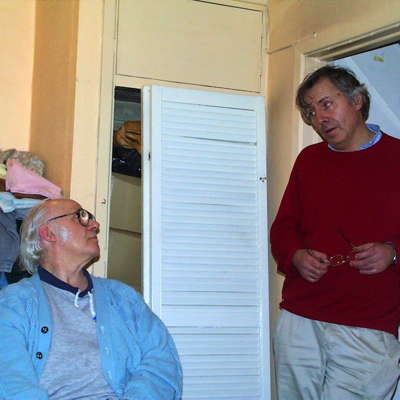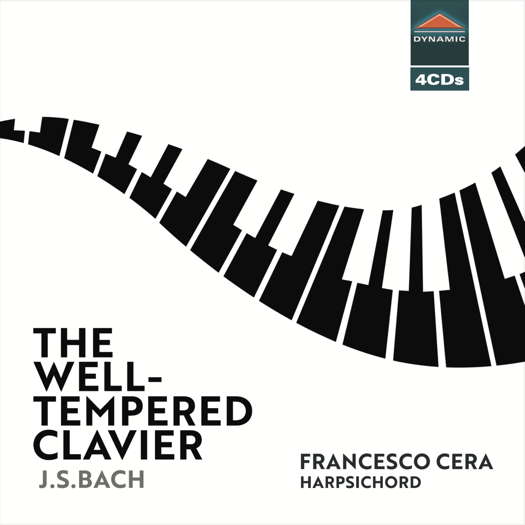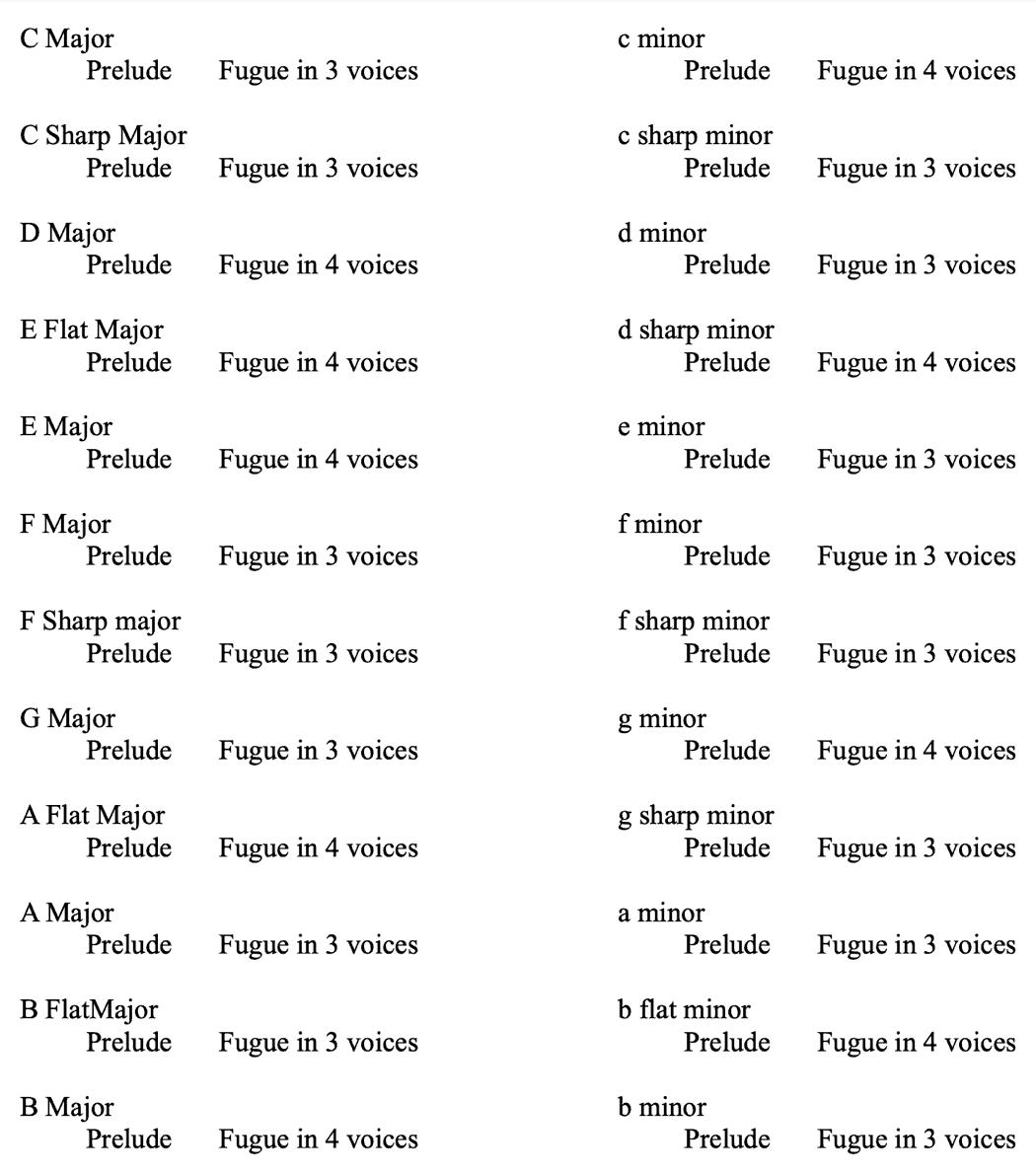 PODCAST: John Dante Prevedini leads a discussion about Classical Music and Visual Disability, including contributions from Charlotte Hardwick, Robert McCarney, Halida Dinova and Giuseppe Pennisi.
PODCAST: John Dante Prevedini leads a discussion about Classical Music and Visual Disability, including contributions from Charlotte Hardwick, Robert McCarney, Halida Dinova and Giuseppe Pennisi.
- Lauranne Oliva
- De Munt
- Arthur Prevost
- Stanford: Requiem
- Borodin: Prince Igor
- Finzi: My Spirit sang all day
- University of Chicago
- Theatre Auditorium de Poitiers
 25 YEARS: Classical Music Daily celebrates twenty-five years of daily publication with an hour-long video featuring some of our regular contributors.
25 YEARS: Classical Music Daily celebrates twenty-five years of daily publication with an hour-long video featuring some of our regular contributors.

A Wonderful Tribute
ENDRE ANARU praises Francesco Cera for his performance of The Well-Tempered Clavier: Part 2, Book 2
'... Cera has ascended two vast Himalayan peaks and is to be congratulated for this achievement.'
Last time we 'internet met', we spoke of the first volume of the Well-Tempered Clavier performed by Francesco Cera. J S Bach wrote two volumes, but separated by many years. The first was reviewed in 2023. The second half of this review is separated by over four months.
The overall plan of Bach's music is the same in the second set: a series of Preludes and Fugues arranged in chromatically ascending order through all the twelve major and minor keys.
| J S Bach: The Well-Tempered Clavier, Book 2 - table of pieces |
|---|

Bach's is an interesting, but not unique arrangement. But, when graphically presented this way, the scope of the set becomes evident and amazing. But notice the limit of voices is four. Book One had a five voice fugue (c sharp minor). There is also not a two voice fugue. (e minor in Book One.)
It would be possible to ask: Why did Bach write another set?
Well, to put it nicely, the processes and achievements of creativity are not to be solved by the non-genius. Rather then, let us leave aside the 'Why?'
Instead, perhaps notice something: they are quite different in compositional style from Book One. Some are of such a level of sophistication in construction (motivic, rhythmic, contrapuntal) as to amaze the observant mind. For example, the c sharp minor prelude or the b flat minor fugue. These are sophisticated beyond the capacity of the words to describe adequately.
Other works are different from volume one in other ways. In listening again to the set (and I have listened to many sets), I was struck again by:
| The use of sequence. | ||
| The use of sequence. | ||
| The use of sequence. |
Listen — J S Bach: Prelude in c minor
(The Well-Tempered Clavier Book 2)
(CDS7997.04 CD3 track 2, 0:00-0:53) ℗ 2023 Dynamic Srl :
Now, Bach does use sequences in the first volume, but something is different here, though I can't quite put my finger upon it.
Taking a piece of biographical lore, the two volumes were separated by a large chunk of Bach's career when he wrote the vast number of cantatas. That giant exertion in itself has got to change a composer. Either tire him out, or make him seek new means and methods, or even use methods that churn out more music with less effort. Many composers fall into this trap, though it is often considered 'finding one's style'. I rather think it is 'finding the tricks of the trade that let the composer produce a large body of music quickly.' However, I do not believe Bach fell into this trap. He was always searching for new methods as witness his series of canons written in later life for a certain emperor.
Somewhere in all of this biographical haze Bach was pilloried by an associate for the overwrought complexity of his music, and that like the insult hurled at A E van Vogt - 'a small man at a huge typewriter', or something like that - has also got to change things.
Or just age. Time does that. But, all of these speculations are just that: trying to explain the difference between the volumes. But the theme from the e minor is perhaps one of the strangest to my old ears:
Listen — J S Bach: Fugue in e minor
(The Well-Tempered Clavier Book 2)
(CDS7997.04 CD3 track 10, 3:02-3:58) ℗ 2023 Dynamic Srl :
This can go a long way away from the usual.
I tend to think these works are by J S Bach and no one else, though it is not impossible that someone else wrote some themes and he took them up having seen their potential. Remember he was given a theme by the Emperor? Maybe after the huge exertion of the cantatas his capacity to invent themes was weakened? (Just a speculation.) I think that Bach had passed into realms of counterpoint that were vastly different and he was experimenting (in the way geniuses do) with the possibilities.
Busoni - whose capacity to observe none should question, however much one may question what he did with the observations - noticed that Bach made use of many of the possible contrapuntal interactions of the theme in the b flat minor fugue.
Cera performs this fugue admirably well keeping the dense counterpoint moving and clear.
Listen — J S Bach: Fugue in b flat minor
(The Well-Tempered Clavier Book 2)
(CDS7997.04 CD4 track 10, 5:26-6:13) ℗ 2023 Dynamic Srl :
Was Bach trying out the various permutations? I would credit him with no less, but always with an artistic aim.
This second volume is also different from the first in its performance by Cera. It seems to me that this was recorded under slightly different conditions. (Not the harpsichord, not the tuning, not the recording engineer's work. Peace.) But I find this series of interpretations more straightforward, less fiery and less subjective than Volume One.
In fact, I think that is a reasonable response to the music: for I suggest that book one has a fire and freedom that the second does not have. The second volume is an ascent into realms of contrapuntal complexity that the first volume does not do as a rule. (The exception is the b minor prelude and fugue and the near perfect three part invention of the Prelude in A major. The f minor fugue is a strange bird, that aspires and fails.) Some of these compositions in Volume 2 achieve what the Gurdjieff School (and especially Ouspensky) would have considered Objective Art. There are no failures here, though there are some insufferable moments. It is rather like someone explaining the inner workings of a clock down to the finest screw-heads when what was asked was 'What is the time?'
In all cases Cera makes the contrapuntal aspiration clear and moving.
As I mentioned in my first essay on this set, I will not make any comment upon the well-temperament. Except this: Might it be that this volume uses a different one from the first, another one, that Bach might have developed in the intervening years? Certainly other theorists had more than one suggestion about well temperament. Might not Bach have had another one as well?
I also must mention again the issue of elocution. The possibilities are endless, though even in Shakespeare's day the extremes annoyed the poet:
Enter Hamlet and three of the Players.
Hamlet:
Speak the speech, I pray you, as I pronounc'd it to you,
trippingly on the tongue. But if you mouth it, as many of our
players do, I had as live the town crier spoke my lines. Nor do
not saw the air too much with your hand, thus, but use all
gently; for in the very torrent, tempest, and (as I may say)
whirlwind of your passion, you must acquire and beget a
temperance that may give it smoothness. O, it offends me to the
soul to hear a robustious periwig-pated fellow tear a passion to
tatters, to very rags, to split the cars of the groundlings, who
(for the most part) are capable of nothing but inexplicable dumb
shows and noise. I would have such a fellow whipp'd for o'erdoing
Termagant. It out-herods Herod. Pray you avoid it.
- text from Hamlet, Act III Scene 2 (opensourceshakespeare.org)
But, now have we gone too far away from that extreme in our homogenous lack of inflections? I notice that many infomercials use computer narrated voices so as to sound precise and not accented (ie American South, Australian, Cockney, Posh, East Indian or some such). Yet, what do we lose by letting machines decide how to speak?
But, with this recording of both volumes of the Well-Tempered Clavier, Francesco Cera has ascended two vast Himalayan peaks and is to be congratulated for this achievement. He has surmounted the difficulties, tried new methods (tuning and rolled chords), has mastered the counterpoint and harmony and presented it in a wonderful tribute to one of the great creators of European Art. For all these I give Francesco Cera great praise.
Copyright © 24 February 2024 Endre Anaru,
Nanton, Alberta, Canada



